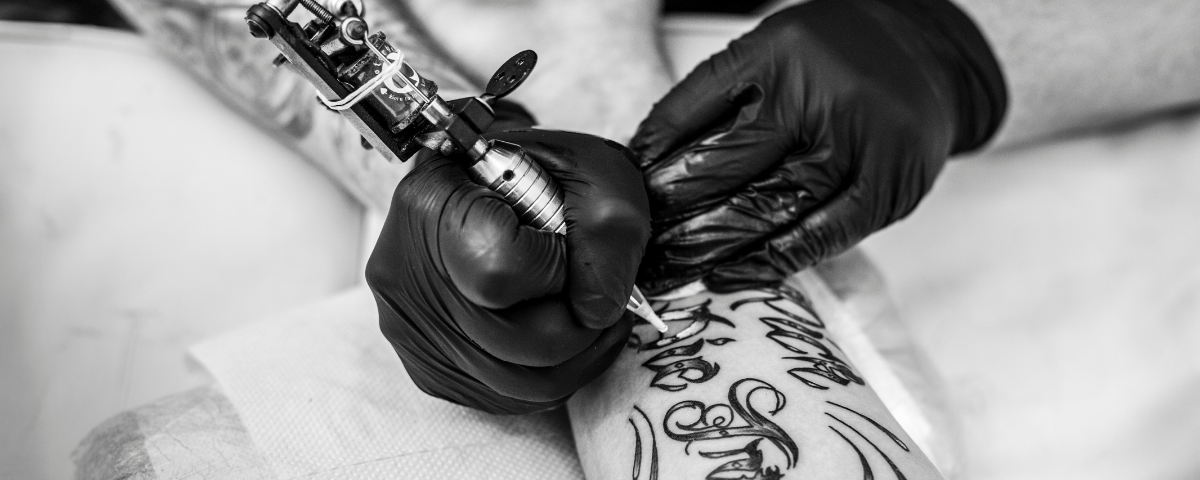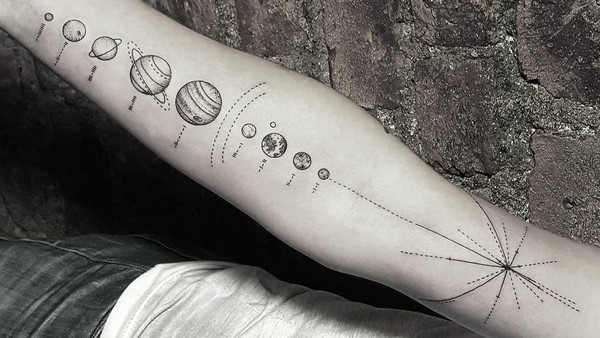Tattoos are Permanent, But the Science Behind them just Shifted

Tattoos have become increasingly popular over the past few decades, evolving from being mainly associated with sailors, bikers, and gang members to becoming more mainstream and accepted across many demographics. The reasons people get tattoos vary widely – some get them simply because they like the way they look, others to commemorate a person or event that was meaningful to them. Tattoos allow people to express themselves through body art and make a statement about their personalities and interests. They come in endless designs from small, simple tattoos to large, complex sleeve tattoos.
While tattoos used to be taboo in many workplace and social settings, attitudes have shifted. Nowadays, tattoos are so commonplace that even professionals across various industries and walks of life sport visible ink. With greater social acceptance, tattoos have permeated pop culture and media. Their artistic and symbolic value is more widely appreciated. Still, tattoos can carry something of a rebellious stigma in some traditional circles.
Nonetheless, if you decide to get a tattoo, put care into the process. Begin by identifying a trustworthy tattoo artist with whom you feel at ease. Once you’ve found the right artist, the next step involves choosing a design. Opt for a creative and personal design that aligns with your individuality. If you have a specific image in mind, consider sketching it out. In case you’re struggling to find the ideal tattoo design, there’s no need to fret. Online platforms like www.tattoosai.com can help you in this regard. These websites utilize AI to swiftly generate tattoo ideas that can be tailored to your preferences.
Recently, a new class of research suggests that our bodies might have an intriguing way of handling tattoos because each one is unique, and the outcome cannot be guaranteed.
These studies might help us better understand how to remove them. However, Saline Tattoo Removal might be an option for those who already have tattoos and want to lighten or strip them off. Talking about the procedure, before it begins, a topical anesthetic would be used to numb the treating area, and the technician would then work on the skin with the saline solution. This process causes the saline and pigment to leak to the skin’s surface, resulting in the formation of a scab. After the scab has fallen off, the tattoo gets lighter.
While a lot of people avoid it or remove it in later stages of life, getting a tattoo is always exciting. You decide on a design or choose one from resources such as www.Thai.tattoo, and consult a tattoo artist to get it. But, when it comes to understanding how the science behind it works, most people don’t know how tattoos work, and they are probably going to get it a bit wrong. The most pervasive oversimplification is that tattoo needles inject ink into the skin, deep enough that it stays in there. However, tattoo needles are more like the nib of a fountain pen than a syringe, the ink is not shot down through the needle but instead suspended at the end of it when the artist dips the tool into a well.
Then, when the tip of the needle stabs a hole into the tattoo receivers’ skin, capillary action – the same force that makes liquid creep up the side of a straw takes place and draws the ink down into the dermis. That is how ink gets into your skin. But why does it stay there?
Scientists have known for a while that tattoos are made possible not by ink-filled skin cells, but by immune cells called macrophages. These white blood cells exist to gobble up foreign and cellular debris, and they come rushing whenever you take damage. So, unsurprisingly, they show up when a needle keeps stabbing you and your skin keeps sucking up ink. The macrophages munch down, and their cellular membranes keep your tattoo ink nice and cozy for many years to come.
Now, researchers have answered one more question: how the hell do those macrophages stay where they are for so long? Apparently, they do not. According to scientists, tattoos will continue to be present after macrophages die. When the immune cells shrivel up, they leave behind ink among your skin cells – just as it was when you first got your tattoo. And would you believe it, the new study suggests, new macrophages rush into the fray to cover the ground of their fallen macrophages left behind.

So, in other words, your tattoo is not just a battle scar from a battle between your need for body art and your immune system. It is a never-ending war.
The scientists started out studying naturally occurring pigments in the macrophages of black mice. When the cells that create the rodents’ coloring died, they would release dark pigment, and macrophages come to swallow it for safekeeping. Watching the process made them curious about how the process could work with tattoo ink, and they were impressed to see that so little research had been done in the area.
As you would expect, this led them to tattoo a mouse – one engineered to make its macrophages easy to kill off. After confirming that all pigment was locked away inside macrophages and then destroying them, the scientists noted no visible changes in the tattoo. And eventually, new macrophages arrived to eat the ink. They also grafted a tattooed piece of skin from one mouse to another and noted around six weeks later that the ink had mostly been ingested by macrophages native to the new host.
The researchers are fairly sure that this process will translate in a human context, though it is possible our macrophages last longer than those in mice. There may not be a constant turnover, they say, but over the lifetime of a tattoo it is likely some macrophages die and need replacing. Of course, tattoos are not actually forever. They do fade as time marches onward. Sunlight is often anecdotally thought to leach the color out of tattoos, but the study’s authors think macrophages turnover they discovered could also play a role.
Overall, a better understanding of how macrophage-related principles in mice will hopefully project the process in human skin as well. With this knowledge,we might be able to create new ways of removing tattoos in the future that requires fewer big lasers with less scarring. Only time and further research will tell though.



